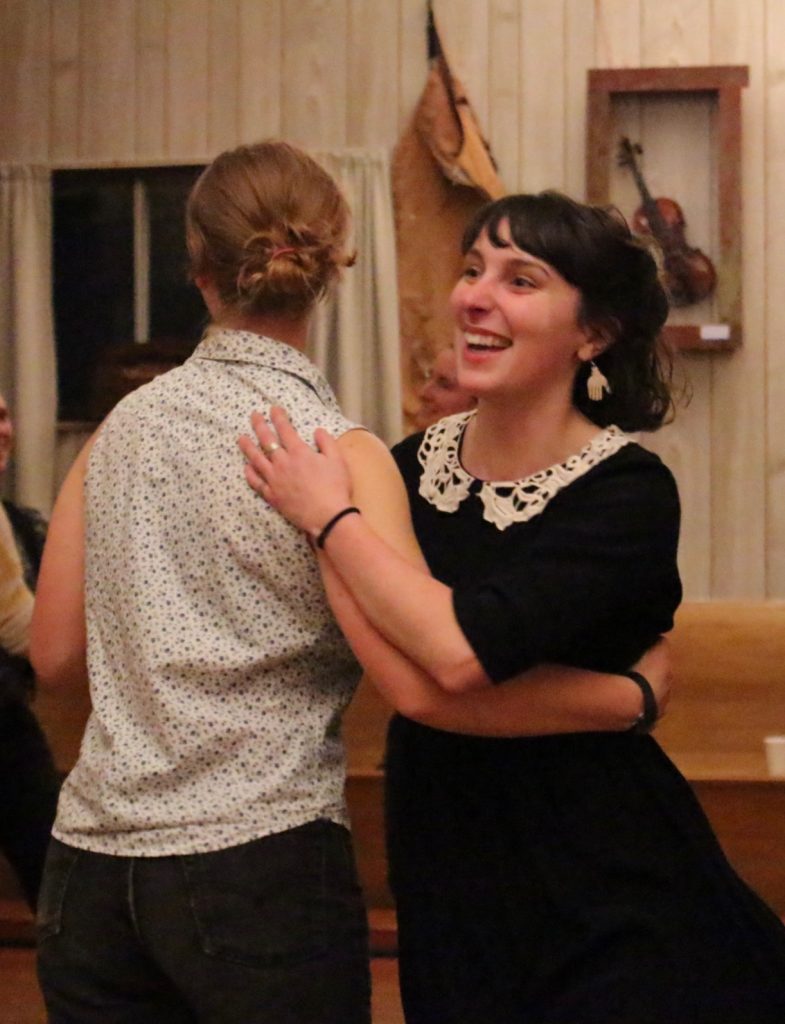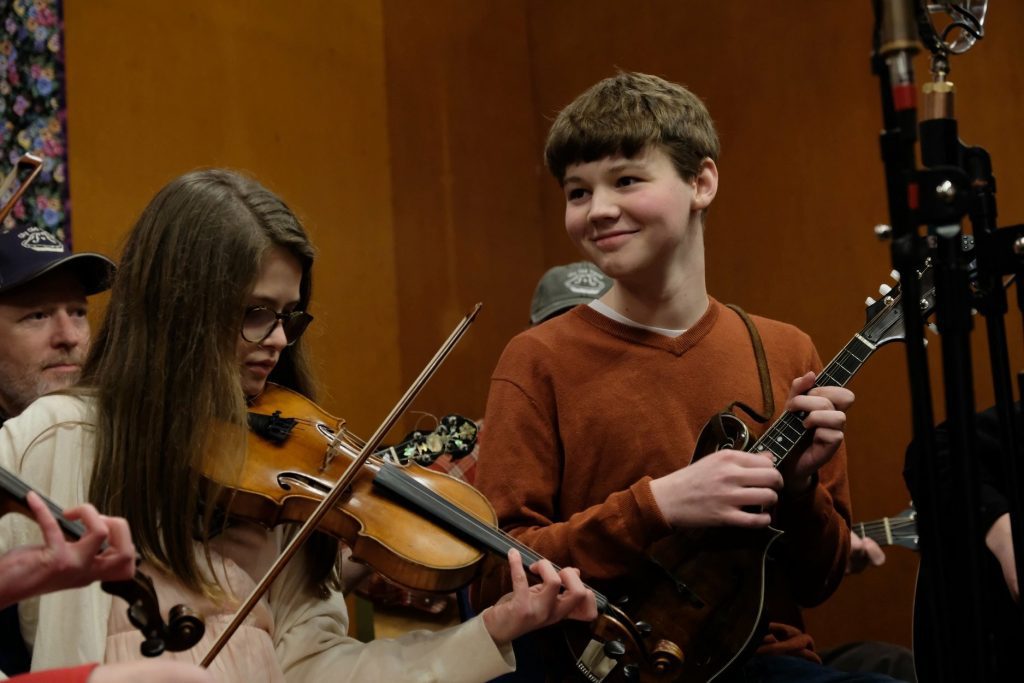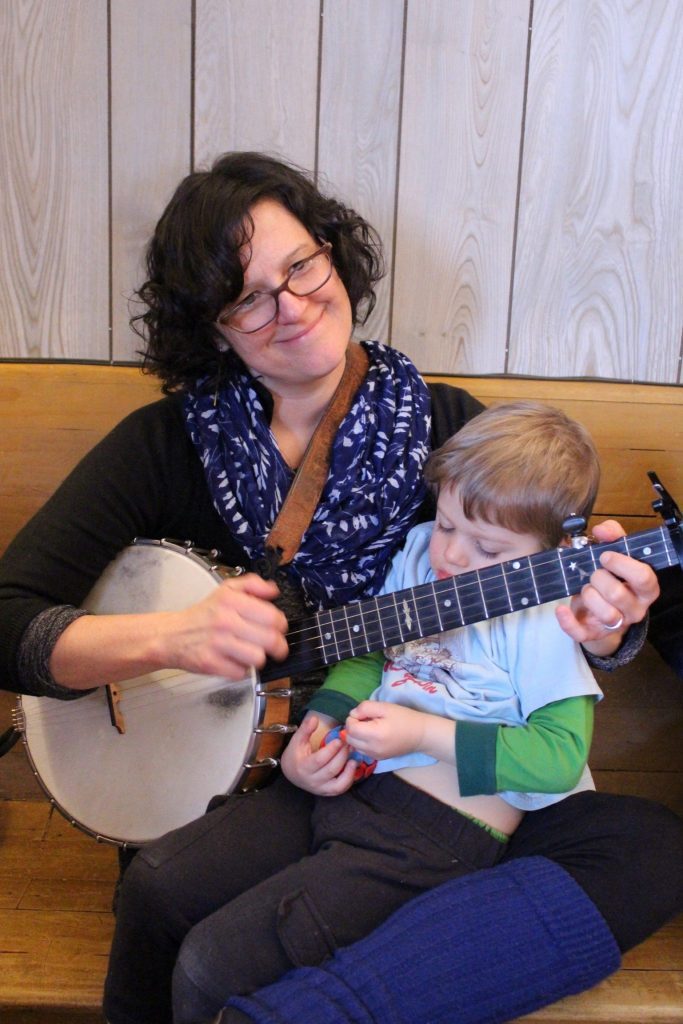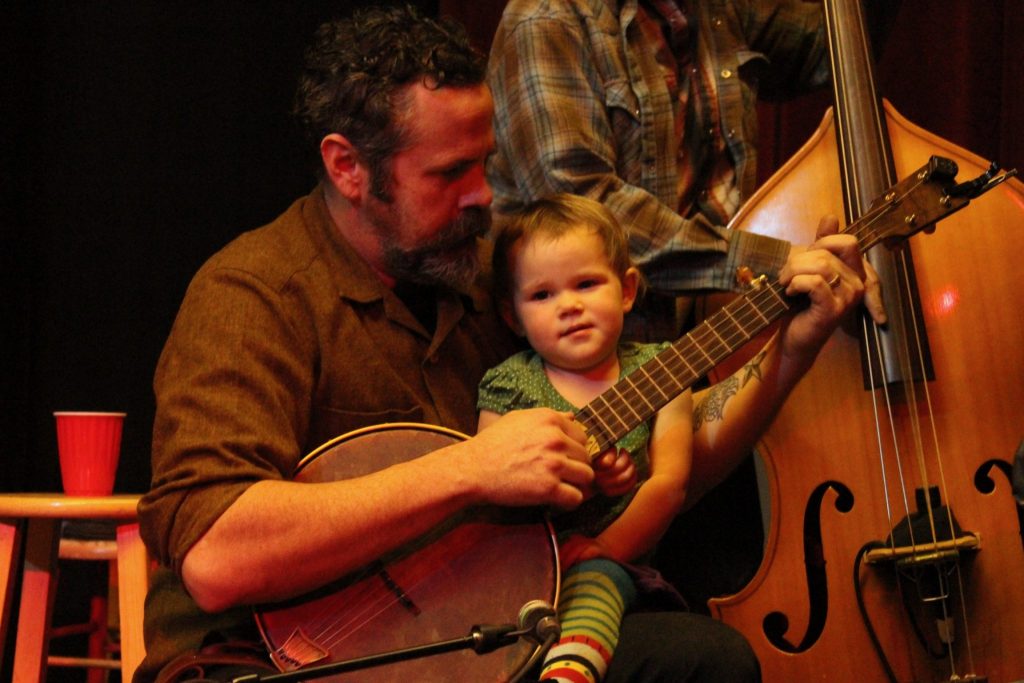By Ned Hayes
In 1991, MC Hammer was huge. I was a published music critic; yet I wouldn’t write about Hammer’s platinum hit “U Can’t Touch This.” Instead, I was obsessed with a young, touring folk musician. In an era when hip hop was going corporate and rap and rock bands were increasingly signing their souls away, I heard James “Sparky” Rucker giving his audience a timeless experience. Rucker sang old-time blues, Appalachian music, ballads, Civil War music, railroad songs, slave songs, spirituals, work songs and original compositions, accompanied by banjo, fiddle and picked guitar. These tunes had an authenticity that served as a powerful counterbalance to the corporate monster of the music-industry machine. When I heard his Tiny House Concert, I felt my faith restored: Music could matter; music could echo in our souls long after a concert was over, and it didn’t have to be all about making another buck or selling another album. My headline article for the music section was titled “Can Touch This: Sparky Rucker’s Real Music.” Real music: That’s exactly the revelatory experience one can find at old-time music events today.
“Old-time” is the umbrella term for tunes by musicians like Sparky Rucker, and it’s also the sacred, musical wellspring that has given voice to entire genres of music — from bluegrass and western swing to country and many strains of contemporary rock. In fact, such present-day performers as Brandi Carlile, Mumford & Sons, Old Crow Medicine Show and Edward Sharpe and the Magnetic Zeros use their music to echo the old-time traditions of acoustic hand-picked instruments, improvisational play and melodic vocals that edge in and out of harmony in joyful and melancholy chord structures. But creating pop stars isn’t the point of this music.
“Old-time music is mainly made by people in their communities, either to entertain themselves or their friends and family, or often for a dance. At its heart it is a folk music,” explains Emily Teachout, cofounder of the Oly Old Time Festival. The word folk refers to the fact that music can be played by anyone on acoustic instruments that they can learn to use by themselves or from another player, and that is shared through an aural tradition.. These instruments usually include fiddle and plucked-string instruments like the banjo, guitar or mandolin. Old-time music is also dance music – it accompanied square dances, waltzes, and individual flatfoot dancers (or cloggers). Yet old-time music also includes both ballads and songs that were often stories or cautionary tales, and not just instrumental dance tunes. “It’s really much more about participation than performance,” says Teachout. “That’s why the tradition includes so much group jamming. Compared to later forms of American music, like bluegrass, where people take breaks and solos, in old time everyone plays the same melody together. This makes it easier to learn, and easier to pass on.”
The original music emerged out of a melding of several cultures on the Appalachian frontier in the 1700 and 1800s. Scots-Irish immigrants brought fiddles and tunes from the British Isles, and in Appalachia, they began to encounter African and Native American musical cultures. African Americans, both slave and free, had brought with them from Africa the original, gourd-based banjo, as well as haunting melodies and improvisational traditions. The African instruments and traditions became the core of new musical interactions. Traditional, Native American circle dances and community dancing mirrored, echoed and changed how the musical community gathered and interacted.

The components that make up old-time music can be picked on separate strings: from the African gourd-banjo, harmonized singing and uniquely African-American style of fiddling to Spanish guitar to the dulcimer from Germany. They include Cherokee flutes and Native American fiddle styles, Cherokee circle dancing and community dances as well as the English and Scots-Irish ballads that still make up many important tunes in the tradition. Together all these parts make one harmonious whole.
It’s important to understand this music didn’t start with one group and use techniques from another. Instead, each addition to the music radically changed the tunes, style and approach to the music. Scots-Irish musicians who picked up the African-American banjo worked in the African-American strumming and thumping styles and, with African-Americans, developed the unique clawhammer banjo technique. Paired dancing from Europe melded with Native American circle dances to become the square dances we know in old-time today.
“By the early 19th century, there was a black banjo presence on the Appalachian frontier and white fiddlers encountered African-American banjo players … influences working in both directions between blacks and whites,” writes traditional-music host Fiona Ritchie in Wayfaring Strangers, her bestselling book about this tradition’s musical history.Ritchie adds, “The music evolved through an egalitarian process of inclusion. The core Scots-Irish tradition from the glens of Ulster cross-pollinated with cultural gleanings from the English, Scottish, Irish, German, Welsh, Scandinavian, native Cherokee, and the African-American community.”
With the commercialization of country music on the radio in mid-century, the old styles started to fade. By the 1950s, this profoundly American music with deep roots was on the verge of dying. A number of musical aficionados strove to keep the music alive. Among the foremost was Mike Seeger, brother of folk-music star Pete Seeger.
“Mike Seeger was very influential in the revival of old-time music,” explains Teachout. “Mike did a lot of field recording and sought out the master players in Appalachia, learned from them and, importantly, brought people like Roscoe Holcomb and Tommy Jarrell out of their local communities and into the larger folk scene.”
Mike Seeger wrote, “Music from the true vine grows out of hundreds of years of British traditions that blended in our country with equally ancient African traditions to produce songs and sounds unique to the United States.” Seeger made it his mission to keep the music alive and grow its audience. “For the peoples of the rural South, their great variety of music, song and story provided their Shakespeare, their dance music, their news and the fabric of their daily lives,” said Seeger. “This music in time became the roots of today’s country, bluegrass and popular music and remains, as ever, enduring and refreshing listening.”

Mike Seeger and other revivalists brought traditional styles to larger audiences, and such bands as the New Lost City Ramblers began to revive old-style music. For his work, Seeger received six Grammy nominations: two with the New Lost City Ramblers, one with John Hartford and David Grisman and three on his own. In 1995 he received the Rex Foundation’s Ralph J. Gleason Lifetime Achievement Award, established by the Grateful Dead, honoring him as “one of our great musical and cultural resources.” In 2009 the National Endowment for the Arts awarded him the nation’s highest honor in the field of traditional arts, a National Heritage Fellowship.
Yet Seeger and his musical compatriots weren’t doing this work for the honors or Grammys. Instead, they were investing in the future and wanted to see this music thrive. The greatest achievement of the group that revived old-time traditions is that today the music seems alive and well with thriving communities of players and dancers.
Individual, melodic traditions within old-time have also been revived and refreshed. In the 1700s, Fiona Ritchie writes, over half of all fiddlers in the United States were black. Today, there are many groups celebrating that rich, African American heritage of old-time music. For example, the Carolina Chocolate Drops are a black, old-time string band from North Carolina. Their 2010 album, Genuine Negro Jig, won a Grammy for best traditional folk album. Native American singers and fiddlers like Walker Calhoun add their voices to old-time traditions. Calhoun, for example, sang Cherokee songs over three-finger-style banjo.
Films from the last two decades have featured old-time music, from the Coen Brothers’ O Brother, Where Art Thou? in 2000 — featuring George Clooney singing old-time vocals to fiddle and banjo — to the 2003 film Cold Mountain, set in the Carolinas, featuring Jack White on “Wayfaring Stranger.”Less-known movies that feature a great variety of old-time music include Emmett Malloy’s Big Easy Express in 2012, which showcased folk rock, old-time and bluegrass musicians including Mumford & Sons, Old Crow Medicine Show and Edward Sharpe and the Magnetic Zeros and Julie Simone’s 2018 documentary Fiddlin’, a foot-stomping celebration of Americana and old-time music.
Today, a particular fountain of creativity is emerging in the Pacific Northwest. It’s inherently community-driven, community-made and creates a community experience. Anyone is welcome to play, and everyone is welcome to dance.

What’s the appeal of this style of music to people today? “It sound[s] homegrown, yet somehow exotic,” wrote Paul Silveria in the Old Time Herald. Silveria’s introduction to old-time music was seeing “a crowd of punks and hipsters clapping, stomping and dancing as though they would kick the floor through. It was my introduction to old-time stringband music, and it left quite an impression.”
Emily Teachout remembers the early days of the scene: “The current, Northwest old time scene was sparked when The Foghorn Stringband formed in Portland and were coupled with a charismatic dance caller and musician, Bill Martin aka King Bubba, who taught a bunch of young folks to call, organize local dances and pass on the music.”
Old-time music is a living tradition. The musical community is still evolving, with influences from hip hop and spoken word to punk rock and anti-corporate and DIY movements in the United States. There’s a unique, Northwest-influenced community growing up around the scene. Silveria describes people you might see at any old-time event: “Train-hopping punks, high school students, radical organizers and plenty of other, younger folks are beginning to dance, call and play alongside people who are 10, 20 and even 30 years older.”
“Today,” Teachout explains, “this is as much about the community as it is about the music.”

WHAT
Oly Old Time Festival
WHERE
South Bay Grange, 3918 Sleater Kinney Rd. NE, Olympia;
Arbutus Folk School, 610 Fourth Ave. E, Olympia
WHEN
Feb. 13-16
HOW MUCH
Workshops free; events $5-$20
LEARN MORE
olyoldtime.com
olyoldtime@gmail.com

